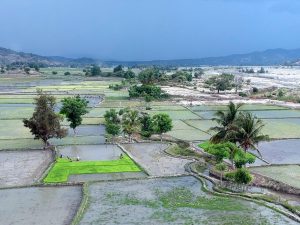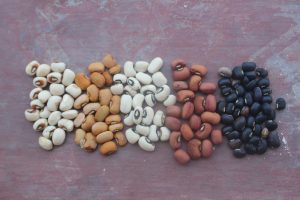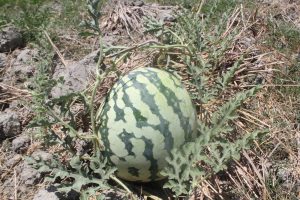New research published this week from AI-Com shows that aflatoxin contamination is unlikely to cause stunting in children in Timor-Leste – effectively simplifying food screening procedures and ensuring the safety of staple farm crops for families.
Published this week in Nature Scientific Reports, the study measured levels of aflatoxin contamination in locally produced maize and peanuts across Timor-Leste. Led by Timorese researcher Luis de Almeida, the new research offers key information on food safety and regulation for policymakers in Timor-Leste.
What is aflatoxin?
Aflatoxins are toxic substances produced by the fungus Aspergillus, and can grow in soil, decaying vegetation, hay and grains. Common in maize and peanuts, which are staple crops in Timor-Leste, aflatoxin contamination causes long term health problems. In some studies, it been associated with childhood stunting—a critical health problem in Timor-Leste. More than 50 per cent of children under the age of five suffering from stunting.
This new study examined aflatoxin levels in women’s and children’s blood samples from Timor-Leste’s 2009 Food and Nutrition Survey, and found no evidence of correlation between aflatoxin levels and stunting. This conclusion, that aflatoxin contamination is not a main driver of childhood stunting in Timor-Leste, suggests that reducing child stunting will not require complex screening of food, as aflatoxin is not a necessary point of intervention.
Aflatoxin contamination is a serious public health problem
While aflatoxin can be disregarded as a main driver of childhood stunting in Timor-Leste, aflatoxin contamination is still a risk in the production and consumption of maize and peanuts — two important sources of carbohydrate and protein in the nutrient-poor country.
Aflatoxin contamination presents a public health risk, particularly in areas where quality testing is limited.
“Most developing countries, where subsistence farming is most common, do not or cannot regulate the quality of grain consumed by the population,” Professor Erskine said.
“Subsistence farmers who produce and consume their own produce are especially exposed to the negative impacts of aflatoxin-affected grain, as it is not subject to quality testing.”
Families can reduce the risk of contamination by carefully selecting good cobs and grains to store, by ensuring crops are dried quickly, and by storing crops only in dry areas, Professor Erskine said.
Research implications
This new study represents an important benchmark for understanding the causes of malnutrition in Timor-Leste. This information may help to guide future policies, procedures and legislation for food regulation in Timor-Leste, and confirms that aflatoxin reduction — while important — won’t have a significant impact on reducing childhood stunting in Timor-Leste.
Research published for the Timor-Leste Studies Association Conference by AI-Com in 2017 confirmed that two of the leading drivers of childhood stunting in Timor-Leste are low calorie intake and poor diet diversity.




